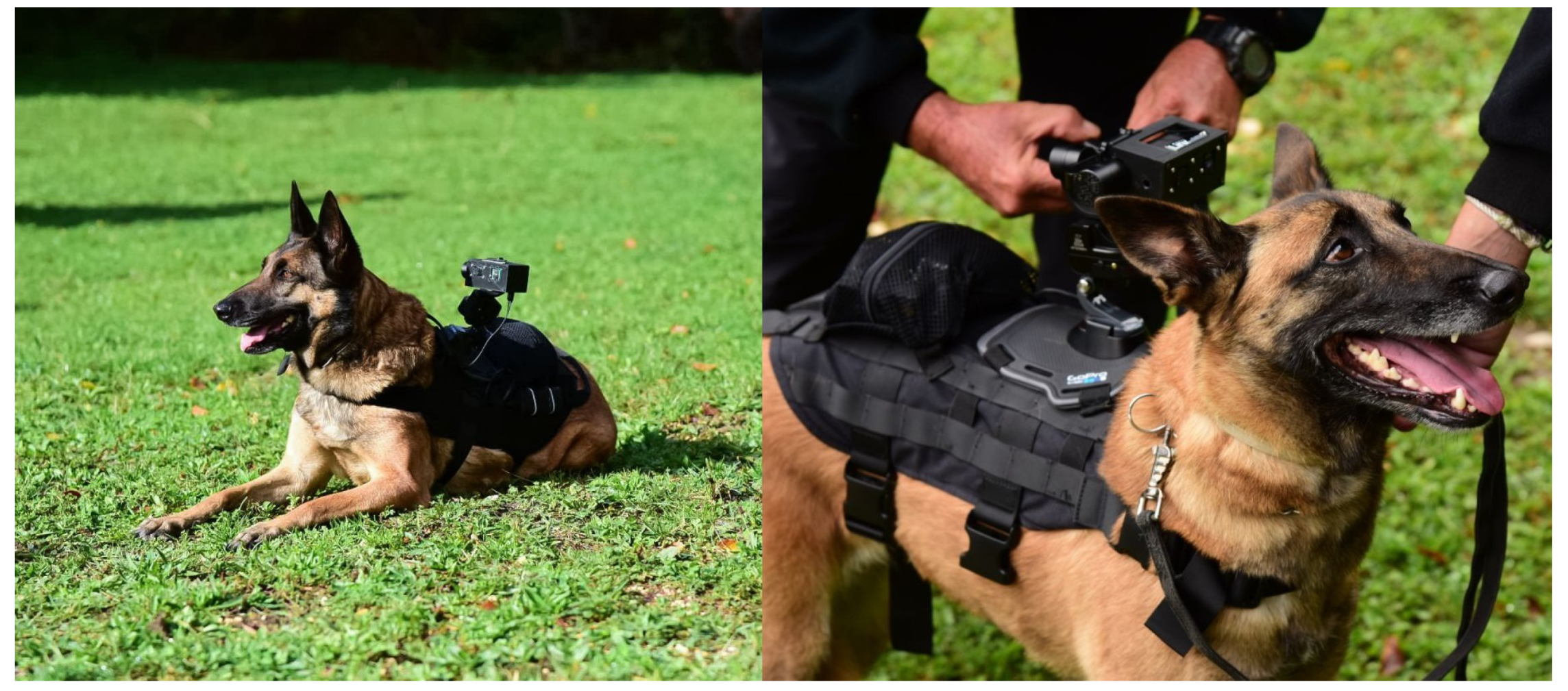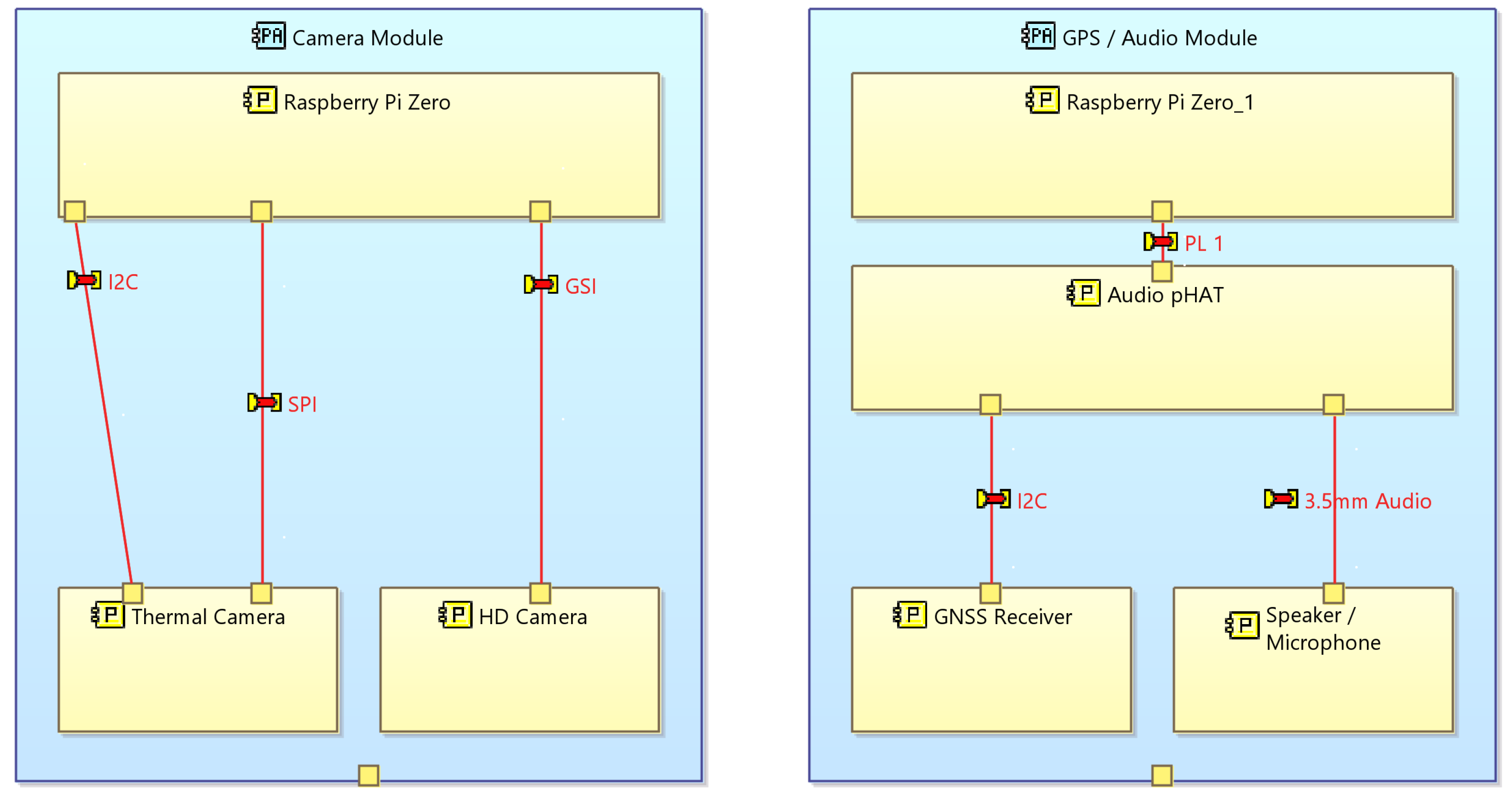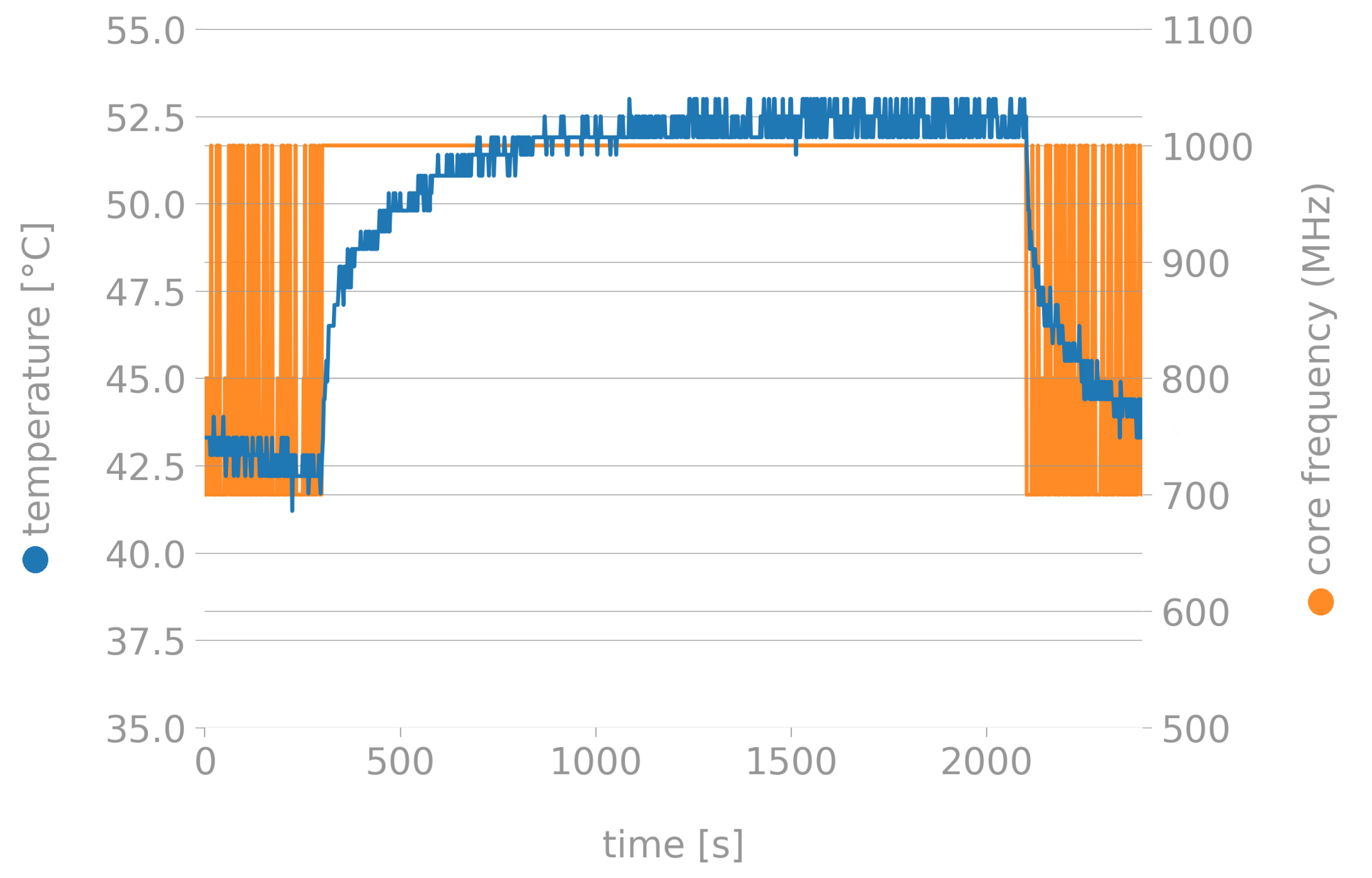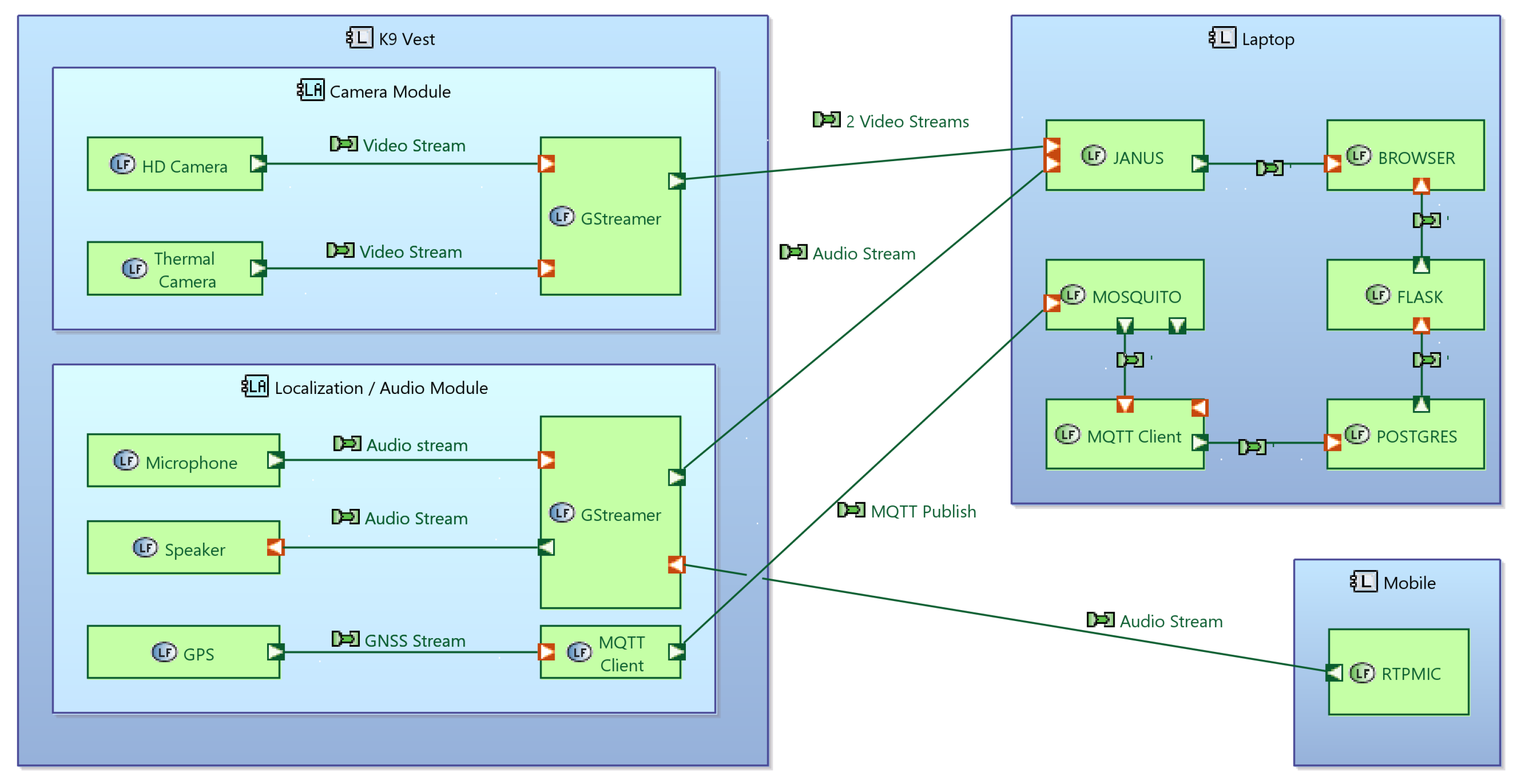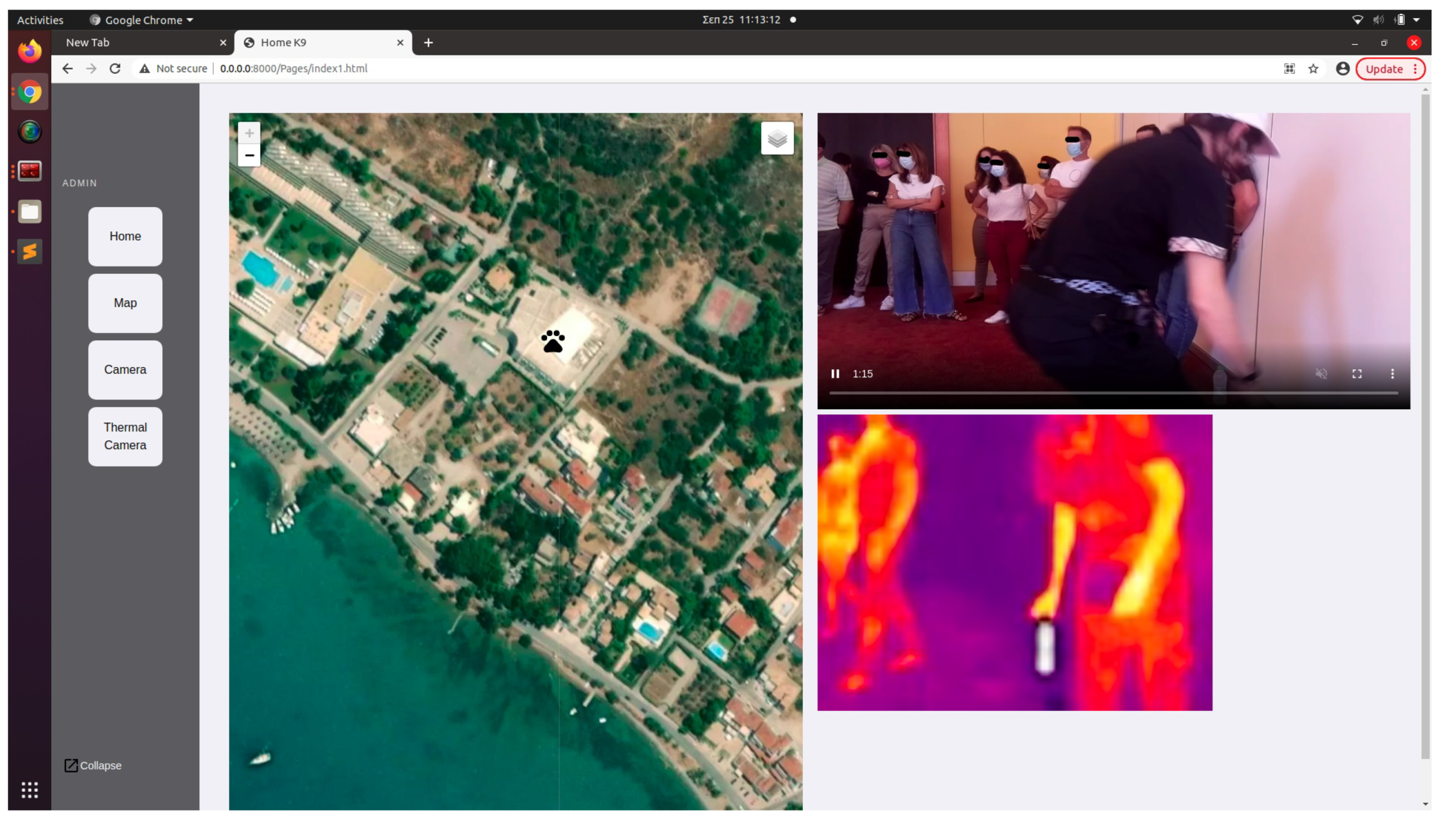1. Introduction
Rescue operations range from small-scale emergencies, within one small geographic area and handled by one discipline of responders, to major disasters spread over a wide range of incident locations. These operations often require complex response operational planning as well as collaboration between different agencies. Such operational conditions require first responders to undertake varying risks and operate under unknown, possibly hazardous or life-threatening situations where time and the timely availability of tactical information are integral to their safety and the successful completion of the mission [
1].
In this context, various technologies have been developed, aiming to support first responders during field operations, by increasing their situational awareness and ensuring timely notification about changes to the operational plan [
2].
Within the context of the INGENIOUS project [
3,
4], the consortium is developing an integrated toolkit that aims to unify all these technologies. The main focus is to assist first responders operating in the field by increasing their efficiency and their situational awareness and decreasing their response time. This is pursued through the development of a Next Generation Integrated Toolkit (NGIT) for Collaborative Response. It includes a set of elements that aim to increase the protection level of the first responders and augment their operational capacity when responding to incidents. The toolkit includes a smart, integrated K9 vest that provides situational awareness to the canine handler regarding the canine’s well-being, location and operational status [
5].
The history of using K9 units in operations started as early as 1889, when the Commissioner of the Metropolitan Police of London, Sir Charles Warren, after the repeated failures at identifying and apprehending the serial killer Jack the Ripper had earned him much vilification from the press, including being denounced for not using bloodhounds to track the killer. He soon had two bloodhounds trained for the performance of a simple tracking test from the scene of another of the killer’s crimes. The results were far from satisfactory, with one of the hounds biting the Commissioner, and both dogs later running off, requiring a police search to find them [
6,
7].
Currently, K9 units are well-trained and specialized in specific tasks where the dogs outperform humans and machines with their ability to identify and track smells even under stressful and difficult situations. These tasks include tracking in wide areas, detecting illegal substances, finding missing persons and searching in rubble. In detail, these are [
8]:
Search and Rescue in confined spaces. K9 units are usually employed during natural and man-made disasters, such as mud slides, tornadoes, building collapses, and floods, to locate survivors who may be trapped or unconscious under debris.
Search and Rescue in wide area. This also extends to lost and missing people, such as hikers who have been stranded in the wilderness or kidnapping victims. The keen olfactory senses of dogs also makes them useful for pinpointing cadavers and organic tissue.
Detection. In many cases where there has been a bomb threat, a shooting or the presence of illicit substances, a K9 unit will be used to locate and identify a variety of different objects and/or compounds that will either be used as evidence or clues. Increasingly, units are being trained to detect specific items. These items include drugs, such as cocaine or marijuana, or the presence of chemicals related to incendiary devices. The detection of discharged firearms is also a priority, both in terms of locating expelled shells and casings, as well as identifying responsible individuals who have residual burn odours on them. In a growing number of cases involving poachers, duties might also include locating illegal quarry and tracking offenders to their base of operations.
For many years, K9 units operated without any technological support, based only on the chemistry between the handler and the canine. Many efforts have been dedicated in identifying the traits [
9,
10,
11] such as trainability, fearlessness, and energy, that are required for dogs to succeed in search and rescue. In addition, experiments have been conducted aiming to identify correlations between the humidity, temperature, or wind speed and effectiveness. The age of the dog has a small positive correlation. It is also notable that dogs covered a mean distance 2.4-times greater than their human handlers but travelled at roughly average human walking speed. It has been only recently that efforts have been made to provide sensors and applications that support such interactions to ensure that the dogs are not limited to their operations by the handlers and that their well-being is closely monitored.
A two-part system consisting of a wearable computer interface for working search and rescue dogs that communicates with their handler via a mobile application, as developed in [
12], is an example of such effort. The viability of the tool was evaluated with feedback from three experts. The use of monitoring technologies to provide handlers with real-time information about the behaviour and emotional state of their canines and the working environment, aiming to establish a more intelligent canine–human collaboration was presented in [
13].
Currently, most K9 units operate without any technological equipment, relying heavily on the training of the dog and the collaboration between the dog and the handler as the available solutions do not cover all their needs. In detail, the available solutions take into consideration only the needs in the field and fail to provide a holistic solution that includes a smart vest for the canine, a monitoring system for the handler at the field as well as monitoring capabilities at the Command and Control Center. For this reason, within the context of Ingenious, we developed a K9 vest that aims to increase the operational capacity of the K9 unit, the situational awareness of the K9 handler and the situational awareness of the Strategic Coordinator. The K9 vest adds remote monitoring capabilities enhancing the victim locating capabilities as well as command of the canines.
The vest worn by a K9 dog is an integrated platform that offers a set of functionalities for the dog handlers aiming to meet all the system requirements that have been identified based on user needs. We present here the functionalities and their association with the system requirements. The vest provides tracking in real time of the position of the dog, increased awareness of the dog’s detection using visual confirmation through cameras and allows the handler to command the dog remotely and communicate with located victims through a smartphone.
Contribution. The K9 Vest has been carefully designed to meet the user and system requirements as identified through extensive research and close collaboration with the K9 unit trainers. The main contributions of the smart integrated vest can be summarized as:
Modular design to support the different requirements and complex use cases.
Multiple deployment options, following the operational needs and the infrastructure availability at the operation area.
Comfortable and robust design that prioritizes the safety of the canine companion.
Smart functionalities toolkit ensuring the monitoring of the well-being of the canine companion and the improvement of situational awareness both in the field and at the command centre.
2. System Architecture
The user requirements were gathered within the Ingenious project through a close interaction with first responders. Bi-weekly user and technical teleconferences set from the start of the project along with several bilateral teleconferences served as meeting points for this exchange of information. A preliminary workshop on the validation of the use cases and user requirements was held as part of the project’s Kick-off meeting, and this was followed by a preliminary 5-h internal user workshop held through teleconference. Two official end user workshops followed, the first one intended to be more specific on user requirements but it was quickly realized that end users did not have sufficient understanding of each tool, and we decided that it was important to invest most of the workshop time on this to be able to acquire meaningful requirements later on.
During the workshop, well-needed discussions were held, and working groups were formed to record user requirements. At the first project plenary meeting, preliminary findings of an aggregate requirement list were presented, and excess time was given to discussions between technical partners and end users in small working groups in order to understand the tools and provide better targeted requirements. Such a process led to updates and refinement of the user requirements.
The requirements collected during the workshops from the end users of the project, were enriched with requirements available in recent studies, regarding the challenges of wearable computing for working dogs [
14,
15] and resulted in the following list of identified system requirements:
Stable video feed.
Geolocation.
Captures HD video.
Captures thermal video, with resolution sufficient to recognize a human from 50 m.
Modular design, as dogs carry different equipment for each task.
Adaptable design to support different tasks.
Tearable for dogs in rubble and tight spaces.
Sensors much be on the vest, no sensors can be mounted on the dog.
All connections should be wireless and/or properly integrated in the material (no loose cables).
Provide visualization to the Command and Control Center.
Provide remote command to the dog.
Provide remote communication between the dog handler and located victims.
Based on the discipline of the first responder, as well as the task that the unit must accomplish, there are different user requirements that will ensure that the K9 handler receives the needed information while, at the same time, the canine companion remains safe in the field. For search and rescue operations in small and confined places, the handler is constantly aware of the location of the dog, so the GPS tracker and the cameras are not very useful, the remote commands and the ability to communicate with a located victim, however, are of upmost importance. At the same time, in order to ensure that the canine companion is safe, the vest should have the minimum possible size and be easily removable and detachable.
In wide-area search and rescue missions, the GPS tracking is crucial for the Command and Control Center when there are multiple units operating at the same area, as this is the only way to verify that the units have covered the complete area of interest. At the same time, during such operations, the K9 handler is not constantly in visual contact with the dog; thus, the streaming from the cameras as well as bi-directional audio are crucial for a successful operation.
Search and rescue operations in general, have a relatively limited duration as the canine is on constant alert, which can be very tiresome. In this context, battery duration is not critical; however, the comfort and the stability of the vest is important for the success of the mission.
In detection operations, the canine companions are trained to operate over longer periods of time, and while they are constantly in the vicinity of their handlers, rendering video and sound functionalities is not integral in the field; however, the GPS localization and the video from the field are very useful to the commanders at the operation centre that can have a near real time image of the situation in the field.
The K9 vest offers two video streams (HD and thermal) as well as bidirectional audio. In addition, the canine’s location is detected with a high-precision GNSS receiver with an attached accelerometer that provides dead reckoning calculations in case of signal loss. The vest transmits data through WiFi LAN connectivity. Information is made available to the dog’s handler as well as the local field coordinator of the mission, while it can also be forwarded to the Command and Control Centre upon request. This allows the canine handler to focus on the mission, ensuring the unit’s safety in the field while providing near-real time information to the mission coordinators, increasing the overall situational awareness. Power is provided through an independent 5V power supply.
The features of the vest are divided between two distinct components, the camera module and the localisation/audio module. Each component operates independently, and they can be added or removed ad hoc in the field depending on the specific requirements of each mission. Care has been taken to distribute the components evenly over the vest, to minimize weight concentrations and protruding components.
In the following paragraphs, the hardware and software components of the K9 Vest are presented in detail. The high-level block diagram of the K9 Vest is presented in
Figure 1.
3. System Design
The system was designed based on the findings of the initial interviews with the canine units as well as the desk research on the state of the art. The design was then modified based on two rounds of testing with canine units in training and simulated field conditions.
Each round of testing was organised in three parts. First, the modules and their operation were presented to the canine handlers along with the scenarios that would be tested. These scenarios were then modified and finalized according to their feedback. The the actual tests were run on the field in an iterative manner, where small corrections and adjustments were applied between tests. Finally a feedback session was organised. This started with a focus group where the tests and their results were thoroughly discussed and continued with the distribution of a questionnaire that participants would fill in.
The first round of testing focused on the physical design of the components and limitations of the canines. A prototype was attached to dogs, trained in search and rescue operations, in order to record how it affected their behaviour and movement and whether it inhibited their performance in any way. The main output of this round of testing was the decision to move towards a more distributed design and reduce the size of protruding parts to ensure the freedom of movement between obstacles.
As the stabilising module protruding from the dog’s back would potentially hinder the dog in enclosed areas, an alternate attachment of the cameras on the front of the dog’s neck was suggested. This option would not include any stabilization of the video image but would facilitate the dogs’ normal behaviour of “exploring” enclosed areas with their heads without any risk of getting trapped.
Table 1 provides an overview of the results of the first round of testing.
Based on the feedback from dog handlers, we redistributed the components following a modular design, separating the HD and thermal cameras into a distinct module that could be attached either to the back of the vest on a stabilizing gimbal or in the front of the dog’s breast without stabilization. Given the fact that dogs operating in restricted spaces (e.g., inside ruins) cannot wear anything that protrudes and might restrict their movement, the camera module was designed so that it can be easily removed or attached on the field, independently from the other components. The rest of the components were redistributed on the vest to make sure they do not protrude and do not form hard edges. The Wi-Fi antennas were replaced with low profile antennas that provide a similar range without protruding from the components.
The second round of testing focused on rescue scenarios in a wooded area and inside a building. The vest and components were also tested for their durability in open grounds, wet conditions and in the movement through rough terrain and obstacles (
Figure 2). The camera feeds were tested for both positions of the camera module (back of the vest with stabilization and on the front without stabilization. The GPS module and dead reckoning were tested in a wooded area and with the dog entering a building. The audio was tested in three specific functions:
- 1.
Listening to the dog’s bark over a distance or over surrounding noise. This was an important issue for the handlers as the dogs bark to indicate if they have located a victim, and their bark is often lost in the overall noise of a rescue operation.
- 2.
Communication with a victim, acquiring information and offering advice until the rescue team can approach.
- 3.
Issuing commands to the dog over the speaker. Testing this feature offered mixed results, as expected, as the dogs were not used to hearing commands over a speaker. Handlers were very interested in training dogs specifically for this and were optimistic about the expected results.
The durability of the construction was tested thoroughly, with the canine running repeatedly through briars and metal obstacles in wet conditions. Repeated collisions of the modules with obstacles were sustained without any structural damage to the enclosures. The vest is not fully waterproof and will not withstand immersion in water when all modules are attached, mainly due to the fact that the stabilizing gimbal is not waterproof. Despite this, it was successfully tested in wet conditions (movement through shallow water and wet briars).
Table 2 summarizes the main feedback received through the second round of field testing. The components of the two modules of the K9 vest are presented in
Figure 3.
3.1. Hardware Components
3D printed ABS enclosures. The two modules are contained in two specially designed 3D printed enclosures. They were designed to protect the components and allow for external connections for power supply, Wi-Fi antennas and speaker/microphone. Special attention was given to minimize the size and distribute the components so that they lay as flat as possible on the vest without sharply protruding parts.
The power supply was attached independently to the vest to allow for its easy removal and replacement in the field. A single USB connection allows for the connection of a new power supply to the vest. The main concern in reducing the size of the enclosures was heat dissipation and the danger of overheating of the electronic components. Once the final enclosures were designed and the components assembled, a test run was performed, followed by stress/heat test using the Stressberry (
https://github.com/nschloe/stressberry (accessed on 10 October 2021)) open source stress module.
The test was run on both modules, while both where connected to the vest’s power supply. A 30 min stress test was run, with 5 min idle periods before and after. The CPU frequency was measured in combination with the CPU temperature. The ambient temperature was 21 °C.
The stress test showed that the module could operate continuously at full power without overheating as the CPU temperature stabilized at acceptable levels. Longer stress tests were run to verify that the power supply could support the module for at least 2 h with the CPU at full consumption.
Figure 4 and
Figure 5 show graphs of the CPU temperature and CPU core frequency over the duration of the 30 min stress test.
Main computing module. The vest’s main computing module is a Raspberry Pi Zero W, as shown in
Figure 6a. It offers on-board wireless connectivity via Wi-Fi and Bluetooth radio interfaces as well as multiple wired interfaces to support the various connected components. The main computing module runs the Raspbian (
https://www.raspbian.org/ (accessed on 24 October 2021)) operating system.
The initial design of the vest included one single computing module for all the components. The choice was made to add a second computing module for two main reasons: reducing the processing load on each of the modules and providing versatility by breaking up components into two distinct modules that can be used independently. The testing sessions with canine units described above informed the decision to have one module for the cameras and one for localization/audio.
With the decision of adding a secondary processing module, the power supply for the entire vest had to be reassessed to ensure that we could support the operational requirements provided by the K9 units—namely two hours of uninterrupted operation. The selected lightweight 5V power supply was tested with the processors being stressed at full capacity.
Antennas and connectivity An additional radio frequency connector, the U.FL connector, was installed on the computing module in order to use an external antenna instead of the on-board one to increase radio performance. Since the canines can occasionally access hard to reach areas or remote locations were the WiFi signal is inadequate, an alternative LoRa (
https://lora-developers.semtech.com/documentation/tech-papers-and-guides/lora-and-lorawan (accessed on 10 October 2021)) antenna is provided so that the system can connect to a LoRa concentrator. In this case, video streams are dropped to preserve the data rate.
Visual (RGB) camera. The visual camera is a Raspberry Pi Camera (shown in
Figure 6b). It is a high definition, lightweight image sensor module. It connects to the main Raspberry Pi board through the onboard CSI connector. The video is recorded, encoded and forwarded to the back-end server. The camera is part of the vest’s camera module.
Thermal camera. The K9 camera module contains a thermal camera, which is a Flir Lepton 2.5 module, as shown in
Figure 6c, with an accompanying breakout board. It requires two interfaces, an I2C for control and an SPI for the video feed. This is a thermal sensor, which captures non-contact temperature data while being small and lightweight. The thermal imaging sensor provides information about heat sources in the field, traditionally not available and, thus, further increases the situational awareness.
Based on the initial requirements collected from the K9 units the main requirement for the Thermal camera would be that it would allow recognition of a human body against the ground (ground temperature) from a distance of 50 m. This requirement informed the selection of the camera resolution, balancing the data rate needs of streaming. Two cameras were tested: a Flir Lepton 2.5 with a resolution of 80 × 60 and a Flir Lepton 3 with a resolution of 160 × 120; both were found adequate according to the requirements. The Flir Lepton 3 was selected for the final implementation since the processing and bandwidth load difference was not major.
GPS sensor. The vest determines location via a low-power GPS sensor, as shown in
Figure 6d. It can calculate position based on multiple satellite systems (GPS, GLONAS and Galileo). It connects to the main board using an I2C or UART interface. It sends information to the board using the NMEA format [
16]. The board includes an accelerometer used to perform dead reckoning calculations in case of GPS signal loss. When entering an enclosed area where the GPS signal is lost, the module continuously provides a calculated position with decreasing accuracy over time. When the satellite signal is reestablished, the position is corrected, and normal transmission resumes.
Gimbal. The Rider-M 3-Axis Mini Portable Stabilizer, as shown in
Figure 6e, stabilizes the image captured for the two video streams when the camera module is placed on the canine’s back. Its compact design ensures that it does not hinder the canine in its movements. It is important to the overall design, as without it the video would be unstable due to constant movement, reducing the usefulness of the information. The effect of unstabilized shaking is less crippling for the thermal camera, and thus the alternate position of the camera module to the front of the vest without stabilization has been explored.
Microphone and speaker. The audio input/output component consists of a wireless Bluetooth speaker, as shown in
Figure 6f, with optional wired connectivity. It offers a bidirectional audio feed between the remote location and the canine handler. It can be used by the handler to issue commands to the canine, communicate with located victims as well as hear the canine’s bark over the loud noises of a rescue operation.

